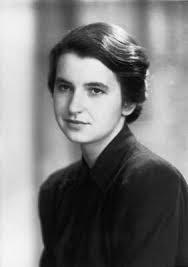Genetic Injustice

March 15, 2021
What makes you you? Is it your unique laugh or your interesting talents? Geneticists asked this same question long ago, but their answer was not nearly so straightforward. It took decades for scientists to accurately identify DNA (deoxyribonucleic acid) as our sole source of genetic material. Even after this outstanding realization, the realm of science could not rest because identifying DNA was just the beginning of the long and tedious fight to discover its structure. Was DNA’s formation secretly simple, or was it truly as complex as it seemed? Geneticists in the early 1950s were determined to solve this problem, and they indeed would, but at what cost?
There were four main names in the race to discover DNA’s structure: Rosalind Franklin, James Watson, Francis Crick, and Maurice Wilkins. In this time period, it was not common for women, such as Franklin, to receive major credit for their scientific findings, no matter how educated they were. While working with Wilkins, Rosalind Franklin frequently found herself being looked down upon. Clashes among these two personas became common in the lab. All the while, James Watson and Francis Crick were doing their own research on the structure of DNA. These scientists would all encounter one another on separate occasions and it was a constant battle for Franklin, who would get teased by her fellow scientists. Crick would call her “Rosie,” which she absolutely hated. Even years later, Watson portrayed Franklin as a mere assistant to Wilkins in his book The Double Helix. Looking back at these immature and passive-aggressive actions, there is just one explanation: they were intimidated.
“We all stand on each other’s shoulders.” While this quote is a seemingly simple line relating to the nature of teamwork, its true context is complicated and bound in frustration. Rosalind Franklin said this immediately after she heard that James Watson and Francis Crick had finalized their groundbreaking model of the DNA double helix. This discovery could be greatly attributed to Franklin’s famous Photo 51, an x-ray diffraction frame that revealed DNA’s helical structure. When Franklin took this revolutionary image of DNA, Wilkins secretly showed it to Watson and Crick. The photo was the final piece in their puzzle, and they immediately reached a conclusion that shook the scientific community. Franklin had reached the same conclusions, but bitter sexism took its toll leading Watson and Crick received basically all the credit.
Years later, when Watson, Crick, and Wilkins claimed their Nobel Prizes, Franklin had died from cancer, most likely from her exposure to x-rays. Nobel Prizes are not awarded posthumously, so Franklin never received her rightful credit but today, her name survives among the great pioneers of scientific discovery.
We can all learn a lot more from this era of scientific discovery than just DNA’s structure. Men oppressing women for the fear that they will get ahead has been a recurring motif in history. Male scientists decades ago would claim to be working tirelessly towards one common goal but refused to accept the ideas of a female, even if it would help crack the code. Instead, they would choose the path of deceit.
Regardless of the injustices that Rosalind Franklin faced, she never let others distract her from reaching her goals. Countless forces were eager to knock her down, but she never once allowed them to block her path to greatness. Injustice exists everywhere, but it’s our job to be a Franklin in a world of Wilkins, Watsons, and Cricks.
Sources:
https://www.rosalindfranklin.edu/rf100/
https://embryo.asu.edu/pages/photograph-51-rosalind-franklin-1952
